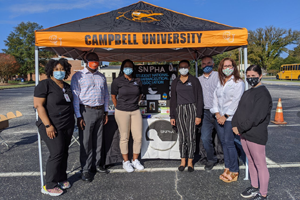Due to the ongoing opioid epidemic, alarming increase of fentanyl overdoses, the rise of the naloxone-immune xylazine, and now a potential crisis involving prescription stimulant misuse, America is experiencing a pivotal health emergency caused by too many unneeded drugs in the home. To address this emergency, many state and local governments are using State Opioid Response Grants (SOR) grants and opioid settlement dollars to invest in preventative measures such as drug drop-box kiosks or reactive measures like naloxone (NARCANTM) and, while valuable, they are not the most effective method to decrease the number of prescription drugs in the home.
As the leader of in-home drug disposal technologies, DisposeRx knows most drug misuse starts with prescription drugs from the home medicine cabinet. In the 1960’s, the National Institute on Drug Abuse (NIDA) found 80% of people suffering from heroin use disorder began by taking heroin. Today, the NIDA reports 75% of those undergoing treatment for heroin use disorder began by taking other people’s prescription drugs. Even today, NIDA reports over 50% of American homes have unused prescriptions in their medicine cabinets1. DisposeRx learned that raising risk awareness and reducing the number of unneeded medications in the home are the most effective steps we can all take toward the common goal of improving public health.
In 1960,
In 2020,
What makes an effective in-home drug disposal program?
DisposeRx has found that three primary criteria must be satisfied before a method will be effective in reducing unneeded medications in the home:
- Patients and caregivers must be aware of the risks posed by storing unneeded and expired medications in the home before they will be motivated to act.
- Disposal methods must be easy to use, accessible to those that want them, and quickly render the medication unavailable for all practical purposes without creating additional risks.
- The method has to be cost effective for all stakeholders.
By meeting those criteria, patients and caregivers are more likely to dispose of their leftover medications when they are no longer needed.
Awareness
Numerous research studies show Americans are not aware of the risks of keeping unneeded or expired medications in the home and feel no urgency to remove them. One study shows that about half of homes in America currently have unused, unneeded, or expired medications in their home. Research published in JAMA Surgery found “As many as 92 percent of patients don’t finish their painkillers, and less than 10 percent dispose of them properly.”2 Unfortunately, those left-over medications are a primary source of misuse. Newport Academy reports that as many as 70% of teens say that their home medicine cabinets are their first and/or ongoing source of acquiring drugs. Without awareness programs that engage high-risk populations like student athletes, misuse trends may continue to increase. Opioid abatement programs like Coaches vs Overdoses raise awareness by leveraging Texans’ love of high school football and engage youth populations with compelling campaigns starring NFL Hall of Famers. Once aware, patients and caregivers are motivated to change medication disposal behavior.

Students attend a football game and learn about the risks of prescription drug misuse.
Removing Risks by Removing Barriers
Patients and caregivers must have a simple, convenient, and effective means for disposal. The DEA’s Take Back Days and drug kiosks (drug drop boxes) are a noble effort; however, the drug kiosks are inaccessible to those that need them most. Statistics show nearly 7 in 10 adults aged 40–79 used at least 1 prescription drug in the past 30 days (69.0%) 3. For older Americans, the combination of polypharmacy, limited mobility, and remote drug kiosk locations, can compound risk of an adverse drug event exponentially.
Regardless of a patients’ age or mobility, drug drop box kiosks continue to be deployed at law-enforcement facilities and pharmacies and many communities hold Drug Take Back Days as options for drug disposal. Unfortunately, research studies show these drop box kiosks and take-back events have almost no effect in reducing the number of opioids within a community. In 2017, a research study found that drug kiosks and Drug Take Back events in five Kentucky counties only received about 0.3% of opioids prescribed in a five county area; that’s less than half of one percent.4 Communities need a safe, convenient, and effective in-home disposal options.
The Cost of Family Safety
Multiple research studies indicate that providing in-home drug disposal packets, educational materials, and offering counseling at no cost to consumers can result in the disposal of up to 92% of leftover opioid prescriptions.5,6,7 By establishing partnerships between different states agencies, many states use grants as a source to fund programs. For example, the Iowa Board of Pharmacy and the Iowa Department of Human Services use SOR money to reimburse Iowa pharmacies for providing patients with risk-awareness education and an at-home medication disposal product at no cost to patients.
Start Today at Home
DisposeRx knows that to reverse the alarming trends in prescription drug misuse, we must educate the public about the risks of keeping unneeded medications and give them a convenient in-home disposal method. Without education about the risks, friends may give friends the one pill that kills. Without convenient disposal, parents’ medicine cabinets will continue to supply youth with prescription drugs. Preventable overdoses must stop and we can start with education and in-home disposal.
References
- NIDA. 2015, October 1. Prescription opioid use is a risk factor for heroin use. Retrieved from https://nida.nih.gov/publications/research-reports/prescription-opioids-heroin/prescription-opioid-use-risk-factor-heroin-use on 2023, June 19
- Bicket MC, Long JJ, Pronovost PJ, Alexander GC, Wu CL. Prescription Opioid Analgesics Commonly Unused After Surgery: A Systematic Review. JAMA Surg. 2017;152(11):1066–1071. doi:10.1001/jamasurg.2017.0831
- Hales CM, Servais J, Martin CB, Kohen D. Prescription drug use among adults aged 40–79 in the United States and Canada. NCHS Data Brief, no 347. Hyattsville, MD: National Center for Health Statistics. 2019.
- Egan KL, Gregory E, Sparks M, Wolfson M. From dispensed to disposed: evaluating the effectiveness of disposal programs through a comparison with prescription drug monitoring program data. Am J Drug Alcohol Abuse. 2017 Jan;43(1):69-77. doi: 10.1080/00952990.2016.1240801. Epub 2016 Oct 31. PMID: 27797283.
- Agarwal AK, Lee D, Ali Z, et al. Effect of Mailing an At-home Disposal Kit on Unused Opioid Disposal After Surgery: A Randomized Clinical Trial. JAMA Netw Open. 2022;5(5):e2210724. doi:10.1001/jamanetworkopen.2022.10724
- Zhang, D.-A. ., Luong, M., Barragan , E., Bushnell, F. ., Cho, R., & Poon, S. (2021). Disposal of Unused Opioids Using an At-home Disposal Method. Journal of the Pediatric Orthopaedic Society of North America, 3(1). https://doi.org/10.55275/JPOSNA-2021-150
- Edwards JM 3rd, Evans H, Dollar SD, Odom-Forren J, Johnson B. Surgical Patient Compliance With Healthcare Facility-Provided In-home Opioid Disposal Products: A Systematic Review. J Nurs Adm. 2022 Jan 1;52(1):35-41. doi: 10.1097/NNA.0000000000001100. PMID: 34910707.






